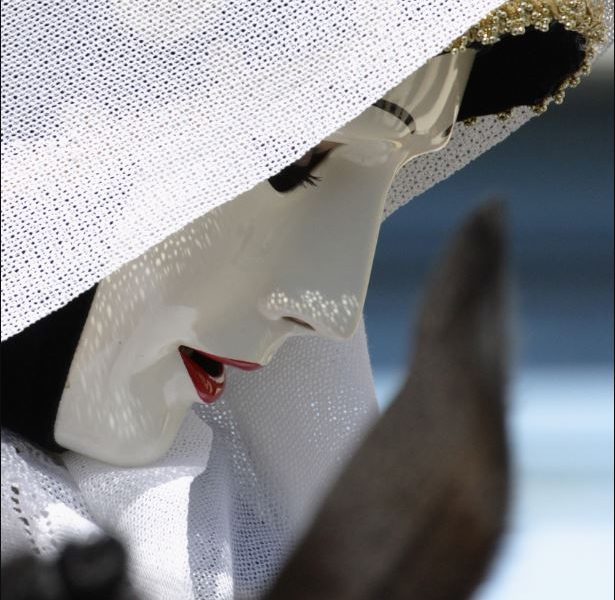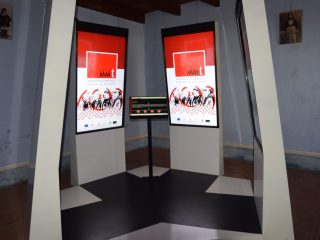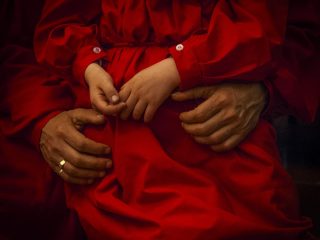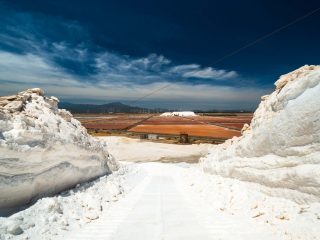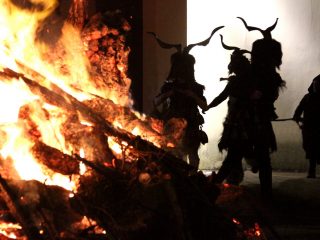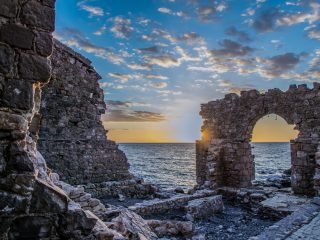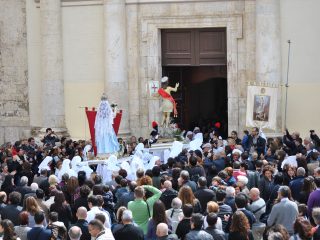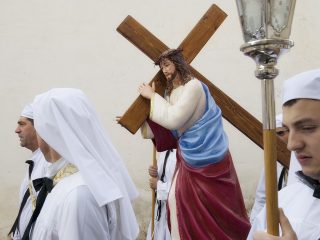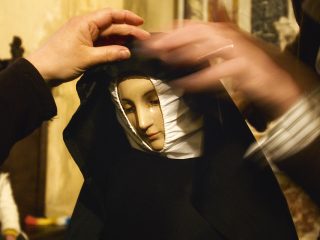The Sartiglia is a race to the star originating in Medieval times and held in Oristano between the last Sunday and Tuesday of carnival. The term Sartiglia derives from the Castilian word “sortija”, from the Latin word “sorticola”, deriving in turn from “sors”, which means luck; Indeed, the Sartiglia is a race to the ring, the star, but also a celebration connected to fate.
The guardians of the tradition are the Gremio of farmers and that of the carpenters. The Gremi are the descendants of the ancient arts and crafts guilds on the island. During the year, the two Gremi appoint the “Oberaiu Majori” and the “Majorale”, who will select the “Componidoris”. Their job is to oversee the two races on both days.
On 2 February, for the Festa della Candelora, the names of the two Componidoris are revealed, and they receive the blessed candles in their homes. On the morning of the race, the chosen horseman heads to the Guild president’s home. The procession starts from here towards the Guild’s headquarters where the ritual of the Vestizione (dressing) will take place. Once the masks are on, the horseman will transform into su Componidori. A group of drummers and trumpeters leads the procession. The “is massaieddas” dress the horseman in traditional Oristano clothing, led by the “sa Massaia manna”, an expert woman who supervises the dressing ritual.
The two Componidoris wear a white shirt, with red bows for the Componidori of the farmers’ Gremio and pink and pale blue bows for the one representing the carpenters’ Gremio. A “cojetto” is worn over the shirt, a sleeveless jacket with a skirt-like hem, tied with leather laces for the race leader on Sunday and with silver, heart shaped brooches for the race leader on Tuesday who also wears an additional pair of leather shorts over his trousers.
The mask is earth colour for the race leader of the farmers and white for the leader of the carpenters. The dressing ceremony is completed when the embroidered veils and top hats are placed on their heads. The su Componidori’s dressing is rounded off with a camelia on the chest, red on Sunday and pink on Tuesday.
Su Componidori climbs on to his horse, harnessed with around eighty rosettes and coloured cockades, to join the procession at the scene of the race which starts in piazza Duomo. Su Componidori tries his luck first by attempting to catch the star at a gallop, followed by the two Componi. After this, only horsemen selected by the race leader can take the challenge. The one who manages to pierce the star with his sword will win a small silver star. Once satisfied with the number of pierced stars, the horsemen will return their swords and take “su stoccu”, a wooden lance which they will use to once again try and catch the star. Once the su stoccu has been returned, su Componidori receives “sa Pipia de Maiu” (“posy of May”), or rather, a sceptre with bunches of violets and periwinkles either end. This symbolises the arrival of spring and, as a result, fertility.
The blare of trumpets and drum roll announce the “sa remada”, maximum test of skill and courage from su Componidori, which brings the race to the star to a close. He lies flat on his back on the horse and launches himself into a gallop, greeting and blessing the crowd with his flowered sceptre.
The procession of horsemen then re-forms and heads towards Via Mazzini, scene of the race of the Pariglie, where groups of three horsemen on three horses perform acrobatics while riding at a gallop. This series of acrobatics is led by the race leader and his two assistants.
The race ends with a second remada performed by su Componidori, this time accompanied by his horsemen. The procession heads towards the place where the vestizione took place to remove the race leader’s clothes. The celebrations then begin and carry on throughout the night, toasting with Vernaccia wine and zeppole, Sardinia’s traditional sweet at carnival time.


